Cancer invasion of malignant cells
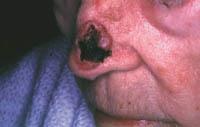
When abnormal cells grow and expand without control in the body, they destroy tissues and organs, cause cancer. The causes of cancer can be of two types, on the one hand genetic and on the other external factors -radiations, virus, food…-. However, the genetic character of the disease does not mean that it is transmitted between generations, but all cancers are due to mutations in the genes of the cells, but there are some types of hereditary cancer. In both cases, the poor growth of the cells produces tumors.
Tumor formation is poor, but the extent of the tumor is even worse. This process is called carcinogenesis. Cell metastasis is essential for the formation of carcinogenesis, that is, the contamination of malignant cells by other cells, tissues or organs. When the tumor only grows, the tumor is said to be benign and can often be removed surgically, while when it expands it is called malignant. When cancer treatments fail, metastasis is the main cause.
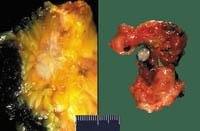
For the detection of the tumor, it is usually large -0.5 centimeters in diameter to be able to detect it by X-rays and one centimeter to detect it by touch - and it is formed by millions of cells. Since the cells of any tumor come from a single cell, experts consider that the tumor formation process is very long.
In the human body there are about 200 types of cells. All of them are able to develop cancer, but 90% of cancer cases come from epithelial cells, carcinomas, while the other most frequent are muscle cells -sarcomas-, blood cells -leukemias, lymphomas and myelomas- and cells of the nervous system -neuroblastomas and gliomak-. This does not mean that the epithelials become more easily ill, but that they have a greater capacity to increase the disease and, being there where they are, have a lower protection against external factors.
Stages of Cancer
When a mutation occurs in one of the genealogies that control the cell, its reproductive capacity changes. This is the first phase of any tumor. This cell grows a little faster than conventional cells and can take a long time to perceive.
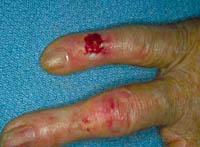
In the second phase of cancer, during the promotion, various factors, including those that are not properly carcinogenic, contribute to increase initial mutation. In esophageal cancer, for example, the incidence of alcohol can be this way. Alcohol can kill the cells of the esophagus epithelium, by quickly replacing them, the risk of mutations and cancer increases. The duration of this second phase is, however, very long, since the second genetic modification of the cell requires millions of cells that have undergone mutation.
After the second genetic change, the tumor progression of cancer begins, with more genetic transformations. Consequently, it increases the ability to damage, the cells acquire the condition of invaders and cause metastasis. According to experts, invasive cells are formed along with the initial tumor, where potential invasive cells are found for tumor detection. For this reason, despite eliminating the initial tumor, the disease often appears again because previously an invading cell "escapes" from the tumor.

In the fight against death cells are fast, as they are able to produce blood vessels, a process known as angiogenesis. As a result, the tumor initially increases and the cells can penetrate the blood circulation and flow, causing the growth of new tumors. When they are around the blood vessels, tumor cells must penetrate inside to penetrate into the blood and lymphatic circulation. When found in the blood-sarcological or lymphatic system -carcinoma, tumor cells face the body's immune system. If they survive, the cells are capable of metastasis. Although the opposite is thought, fortunately this process is not very effective, since only 0.05% of the total of cells can complete the process. Therefore, the risk of metastasis depends on the number of cells.
Causes of Cancer

During the last two centuries, research into the causes of cancer has focused on external agents, while in the last two decades it has been observed that the enemy is inside: cancer is produced by genes. That is, by external agents. In other words, carcinogens cause changes in the genes. These carcinogens can be chemical compounds, physical agents, and/or microorganisms capable of causing infection. Individually, the main risk factors are:
- Age: Cancer mainly affects older people, so because of the growing hope of life, it would be normal for cancer to go up. In fact, the possibilities of gene mutations increase with age, since errors can occur in the reproductive process. Since the development of cancer requires more than one mutation, the age of people is a very important factor. According to experts, when cancer appears in young people, it may be due to inherited genes or exposure to carcinogens.
- Tobacco: Tobacco is responsible for 90% of cases of lung cancer, but also affects cancers of the larynx, pharynx, mouth, kidneys, etc. In fact, tobacco itself contains a lot of carcinogenic substances and, in addition, produces more harmful substances in combustion.
- Feeding: According to experts, feeding can influence the development of cancer. They say that foods rich in fat in general are very harmful. However, it has not yet been shown that a particular diet can be a preventive measure, although nutritional experts advise a Mediterranean diet.
- Alcohol: Drinking seems to have a lot to do with cancers of the mouth, larynx, pharynx, esophagus, and liver.
- Infections: Some infections are risk factors to increase certain types of cancer: Epstein-Barr virus, herpes, hepatitis B, infections of Helicobacter pylori bacteria, AIDS virus, etc. According to the theory, when all these specific infections are produced, the immune system loses capacity and is in this situation where cancer can occur.
- Radiations: They are not known very well, but scientists believe that exposure to X-ray and gamma rays can cause cancer. Numerous studies have been carried out in this regard, but it has not yet been shown that the radiations emitted by appliances, which can generate high voltage lines, etc. are the cause of cancer. As is known, ultraviolet radiations of sunlight are the main risk factors for the development of skin cancer.
As is normal, science knows much more about the genetic changes that occur in cells that develop cancer in the last 25 years. Thanks to this, the process that turns normal cells into abnormal is now better known than before.
It is clear that when one discovers how reproduction is controlled in the cell and how this control is lost, how these cells become invasive, and how they escape the body's immune response, drugs and treatments can be found to reduce the incidence of cancer. It seems that the generation of new knowledge and technologies and the formation of the human genome will help within a few years to identify and avoid the genetic changes that occur in each type of cancer and in each patient. When this arrives, the detection can be performed before, the diagnosis will be better and the treatments can be more effective. In the meantime, despite the breakthrough, the complexity of changes in cancer cells is high, so there is still much to know about.
Prevention as a more effective measure
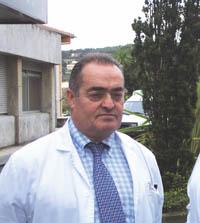
At the San Sebastian Oncological Institute they try to cure the disease, but not only in that, but they give much importance to preventive work. This work has no limits, since it allows to reach the simplest advice from the use of cutting-edge technology to perform specific diagnoses.
According to the head of the prevention area of Onkologikoa in Donostia, Jesús Mari Carrera, in the fight against cancer several levels of prevention are distinguished. "We distinguish four levels, although one of them still begins, because it is not done."
Primary prevention aims to reduce the incidence of risk factors. "Cancer is a disease caused by personal predisposition and external factors. On this first level our work is aimed at reducing these risk factors. These external factors can be physical, chemical or biological."
According to the race, physical factors are defined taking into account ionizing radiations, x-rays, solar radiations, radiation resulting from nuclear energy, etc. As for the chemical factors, we must talk about substances that somehow enter the body, especially tobacco and food. "30% of all tobacco cancers are direct causes, which is already demonstrated. This does not mean, however, that the burn is not painful, since it may be due to the previous trends of each one. In any case, it is clear that tobacco has a great influence on the number of cancer cases. The Mediterranean diet is still unproven, according to studies, in general, it is believed that eating a lot of fat and little vegetables increases the chances of developing cancer, so they recommend the Mediterranean diet, but it is not entirely clear. In fact, the research carried out has analyzed small groups of population in a short time, which is not very significant. That is why it is possible to hear today that coffee is very good to avoid cancer and tomorrow the opposite". Biological factors are those caused by viruses.

In the same way as taking care of the factors that can trigger cancer and avoid them as much as possible, time detection is no less helpful. In fact, in some cases of cancer, the onset of the disease may be long and late when the first symptoms of the disease appear. Therefore, the second level of preventive work, early diagnosis, is of vital importance. "Female mammograms, breast studies, are already rooted as preventive measures in most hospitals, including among women. Mammography has become a custom. Therefore, it is possible to carry out an early diagnosis. Likewise, on the occasion of visits to the gynecologist, in cases of uterine cancer. As can be seen in the usual reviews, there is also an early diagnosis.
On the other hand, in certain medical visits, an early diagnosis can be made in the case of cancers of the throat, skin or belly. Given certain symptoms, we also perform more precise techniques, colonoscopies, study of the feces in the presence of blood… but applied to each case, it is not something that is done to the majority as in the case of mammography. In summary, we would say that in the case of the breast and uterus we make an early diagnosis, even in another degree, in cancers of the throat, digestive, prostate and skin. The main difficulty of cancer is that in some tumors early detection is practically impossible."
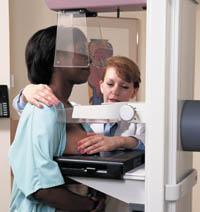
As in the case of mammograms or gynecological studies, there may be some other type of general curriculum. From the outside it does not seem to be the worst solution. Jesus Mari Carrera, however, is not like this: "General Exploration Plan? It would be too expensive and would not solve much. Everything is a matter of balance. If there is no result then, how much effort and how much effort must be made to detect all kinds of cancer? In the case of breast cancer, it is observed that the effort is worth it, since later a technique of great influence and not so costly has been developed. When it is so, it is clear that it must be done, but as long as it does not happen…".
As for prevention, the two mentioned works – avoiding factors and making an early diagnosis – would be the most important, but there is also a third, which is often more therapy than prevention. "Despite not being malignant or malignant in the appearance of a tumor or in the appearance of certain symptoms, we try to remove the tumor before the good becomes bad. The therapy can be, however, a preventive measure." Measure taken in the future to avoid future mistakes.

However, techniques are also underway that look farther than that, which somehow mark the future of preventive work. "Here we still do not do it and elsewhere it is still in the phase of experimentation, genetic research. That is, the tendency of people to develop cancer is analyzed. This technique is still being developed. This is a high cost technique, both from the economic point of view, in which people should be analyzed individually and from the point of view of the history of their ancestors, as well as from the psychological point of view. Imagine that for each of us we have a great opportunity to develop a certain type of cancer! Living with it would be hard, but at the same time this could help avoid the external factors that can cause this type of cancer."
In therapy there is also hope in the genes
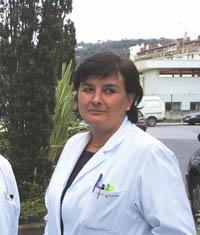
Surgery is one of the techniques used in the fight against cancer. "Sometimes -Arrate Plazaola, doctor of the Onkologikoa of San Sebastián- is enough to remove the tumor, but most of the time together with surgery we establish some treatment to ensure more." Skin, lung, and digestive tumors are the ones with the best surgical result. "In general, the best results are obtained with solid tumors, especially in the early stages of the disease."
When talking about cancer therapies, people are scared because they have side effects. The surgery itself, in addition to the postoperative recovery period, has no special effects, while radiation therapy and systematic treatments - chemotherapy, hormonal therapy and biological treatment - yes. However, the difference between radiotherapies and systematic treatments is that radiation therapy affects a certain part or area of the body, while the rest affects the whole body.
Radiation therapy, therefore, is directed to specific areas of the body and is used when the tumor is not well identified and extended, as in the nodes.

Among the systematic treatments, the best known is chemotherapy, but at least two others are used, such as hormonal therapy and biological treatments. "Through chemotherapy we intend to break the system of multiplication of tumor cells, hence other effects, vomiting, hair loss, etc. We usually give chemotherapy through the blood. However, in some cases, in very few cases, we could also do so through pills. Everything has to be done in the hospital, since both chemotherapy and later rest would be too hard to carry at home. This is the biggest or smallest error of chemotherapy, since the side effects affect all cells both to the sick and to the healthy."
The most developed therapy to fight cancer is hormonal therapy. Hormonal therapy, as in the case of chemotherapy, aims to break the cell duplication system. When taking the pill, the signals are sent to the nucleus of the cell, which is ordered not to duplicate. It finds the membrane that causes the increase and, without breaking it, the cushion or stops it. The effect is usually long. "We give it with the pills that the patient has to catch and have no side effects. Depending on the type of cancer, hormonal therapy, such as breast, uterine, and prostate, are very suitable for treating with hormonal therapy. In any case, before opting for this or other treatment, the pathologist should indicate whether or not the patient has a receptor." According to Arrate, although hormonal therapy is sometimes started, chemotherapy may also be passed. "Many new hormones are emerging and that also helps open the enclosure."
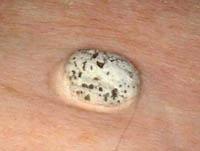
The aim of biological treatments is to influence the genetic characteristics of cells. These are venous treatments that are being investigated a lot. The therapy of biological treatments can be passive or active. The most commonly used passive therapy is monoclonal antibodies. Once the drug is introduced by the vein, it acts on cells with certain genetic characteristics, leaving the rest in peace. Therefore, this technique has no side effects, since it acts against specific proteins. When immunotherapy is active, the recovery of the immune system itself is sought on the one hand, and, on the other, compel the immune system to produce substances that do not contain. "In these cases we talk about tumor vaccines. We introduce in the body products that can arouse the immune system, interferons, especially in cases of melanoma and leukemia. Finally, we use interleukines. The body cannot produce certain substances and we introduce them through interleucas".
Although it is observed that the future of biological treatments can be fruitful, at present it is mainly worked with hormonal therapy. In fact, once the hormonal therapy is used, it can be passed to chemotherapy, combinations can be made. "We have not yet mastered cancers. The results are getting better, we managed to cure many leukemias, testicular cancer, breast cancer and others, but we have not yet found a way to overcome all variants of this disease and heal it completely. However, things are changing a lot. Although it is now cancer, there is the possibility of prolonging life, of transforming what was a hard and aggressive disease in many cases into chronic diseases." As you can see, researchers work well and you can say that something is advancing every day, but you can't know when cancer will be won.
Buletina
Bidali zure helbide elektronikoa eta jaso asteroko buletina zure sarrera-ontzian










